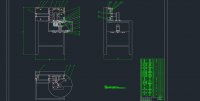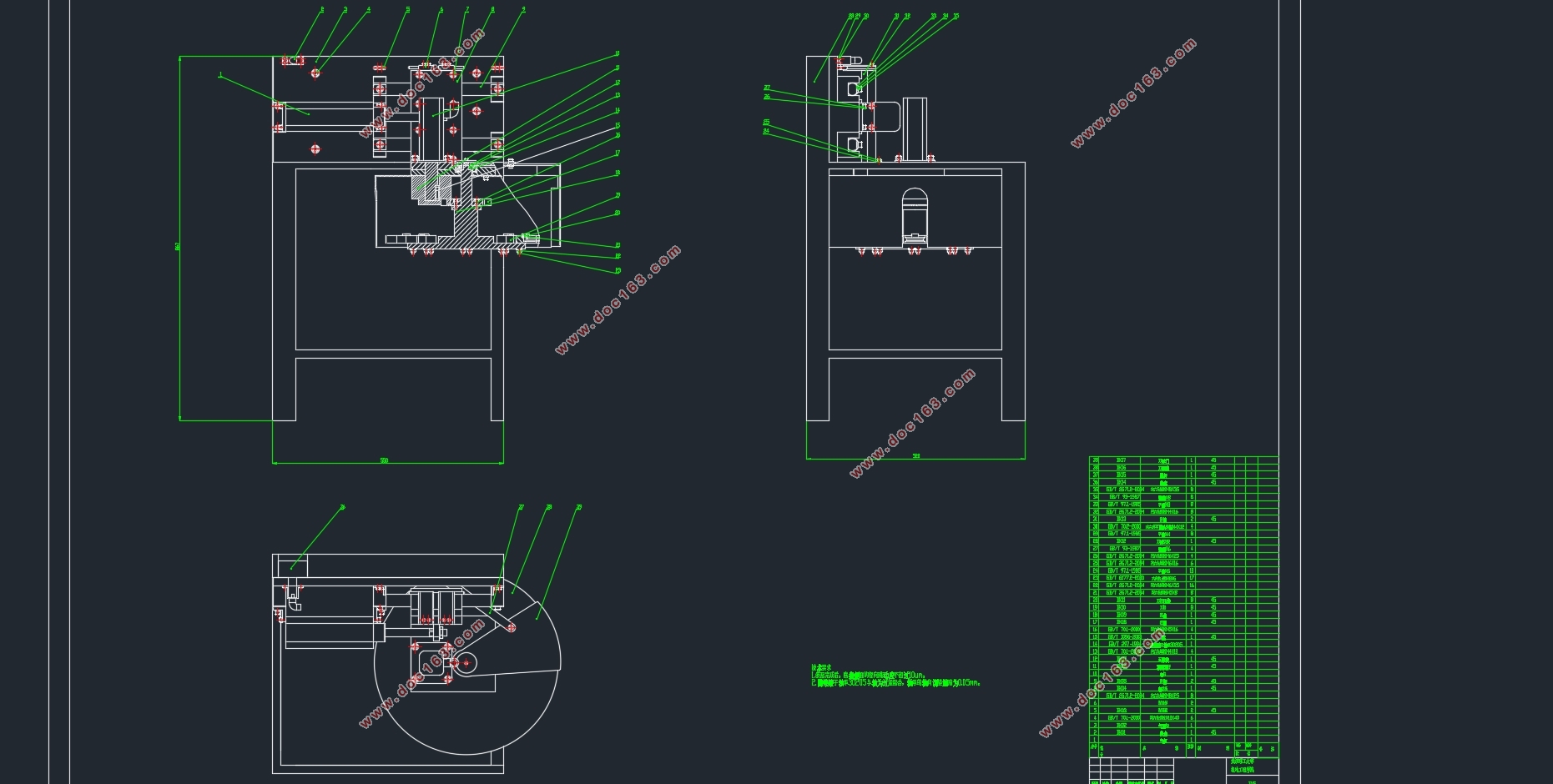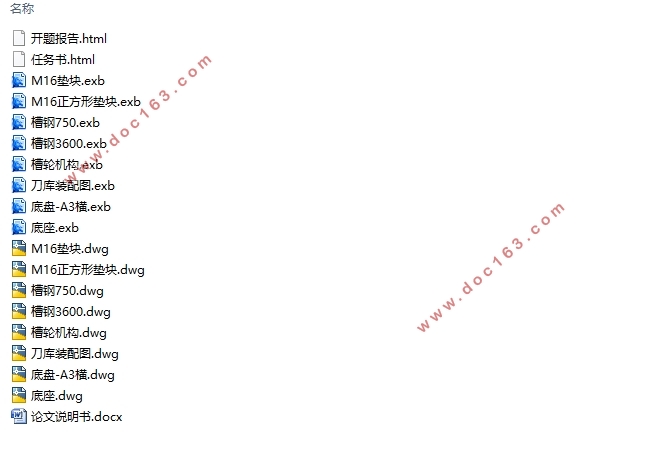钛合金铸件加工打磨一体机的设计(含CAD图,CAXA图)

钛合金铸件加工打磨一体机的设计(含CAD图,CAXA图)(任务书,开题报告,论文说明书13000字,CAD图纸8张,CAXA图纸8张)
摘要
针对现阶段钛合金铸件中介机匣人工打磨的劣势,本文提出了采用工业机器人配合旋转工作台的方法来实现工件的各个不同部位的加工打磨。根据工件的加工要求设计了相关的打磨工艺,并选型了刀具,刀柄,电主轴,机器人,旋转工作台等所需的设备,然后设计了自动换刀装置来实现打磨过程中的自动换刀,并且还有单臂吊,定位夹紧装置等来方便工件的定位夹紧,还有底座,防护罩等来保证安全性,使所有装置形成一个较完整的加工中心,采用robotstudio程序控制机器人的加工轨迹,PLC程序控制自动换刀过程,使整个系统形成一个自动化的整体。由此我们可以大大降低工人的劳动强度,提高生产效率,保证产品质量的一致性和稳定性,降低生产成本。
关键词:工业机器人;钛合金;旋转工作台;自动换刀;打磨
Abstract
In view of the disadvantage of the artificial grinding of the intermediate case of titanium alloy casting at present, a method of using industrial robot and rotating table is put forward to realize the grinding and processing of different parts of the workpiece. According to the processing requirements of the grinding process related to the design and selection of cutting tool, tool shank, electric spindle, robot, rotary table and other necessary equipment, and then design the automatic tool changing device to realize the automatic tool change during the grinding process, and there is a single arm crane, positioning and clamping device to facilitate positioning and clamping. The protective cover and the base, to ensure safety, so that all devices formed a relatively complete machining center, machining by using the robotstudio program to control the robot, PLC program control automatic tool changing process, the whole of the entire system to form an automated. As a result, we can greatly reduce the labor intensity of workers, improve production efficiency, ensure consistency and stability of product quality, and reduce production costs.
[资料来源:http://doc163.com]
Key words: Industrial robot;Titanium alloy;Rotary tables;Automatic tool change;Grinding
[资料来源:http://www.doc163.com]


目录
第1章绪论 1
1.1 研究背景 1
1.2 国内外研究现状 1
1.3 研究的目的和意义 4
1.4基本内容以及目的 5
1.5 拟采用的技术方案及措施 5
第2章打磨工艺及主轴刀具机器人的选型 7
2.1 打磨的工件及打磨部位的介绍 7
2.2 刀具的选型 10
2.2.1 刀头材料的选择 10
2.2.2 刀柄的选择 11
2.3 打磨的工艺 12
2.4 电主轴的选型 13
2.5 机器人的选型 14
第3章机械系统的设计及选型 16
3.1 自动换刀系统刀库设计 16
3.2旋转工作台选型 18
3.3 定位夹紧装置设计 19
3.4 单臂吊的设计 21
3.5 底座设计 22
3.6外围护罩设计 24
3.7 整体的布局 25
第4章控制及仿真 27
4.1 robotstudio控制仿真过程 27
4.1.1 robotstudio简介 27
4.1.2 软件仿真过程介绍 27
4.2 PLC控制的刀库自动换刀 31
第5章总结与展望 33
参考文献 34
致谢 36
上一篇:基于螺杆连续挤出机构的巧克力3D打印机结构设计(含CAD零件图装配图)
下一篇:异形冲头轴向抛光装置设计(含SolidWorks三维图)
